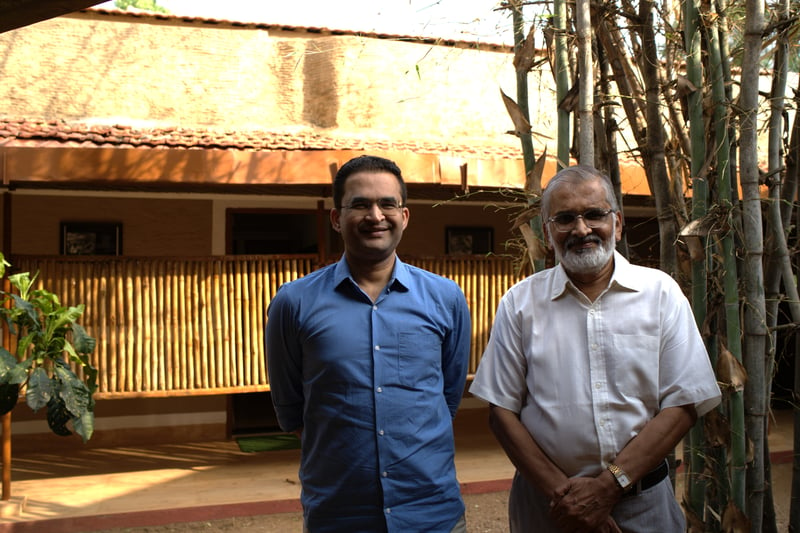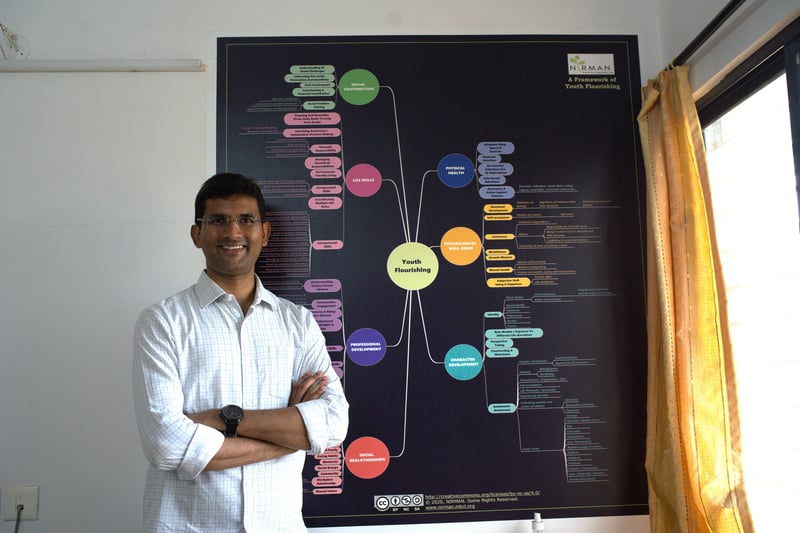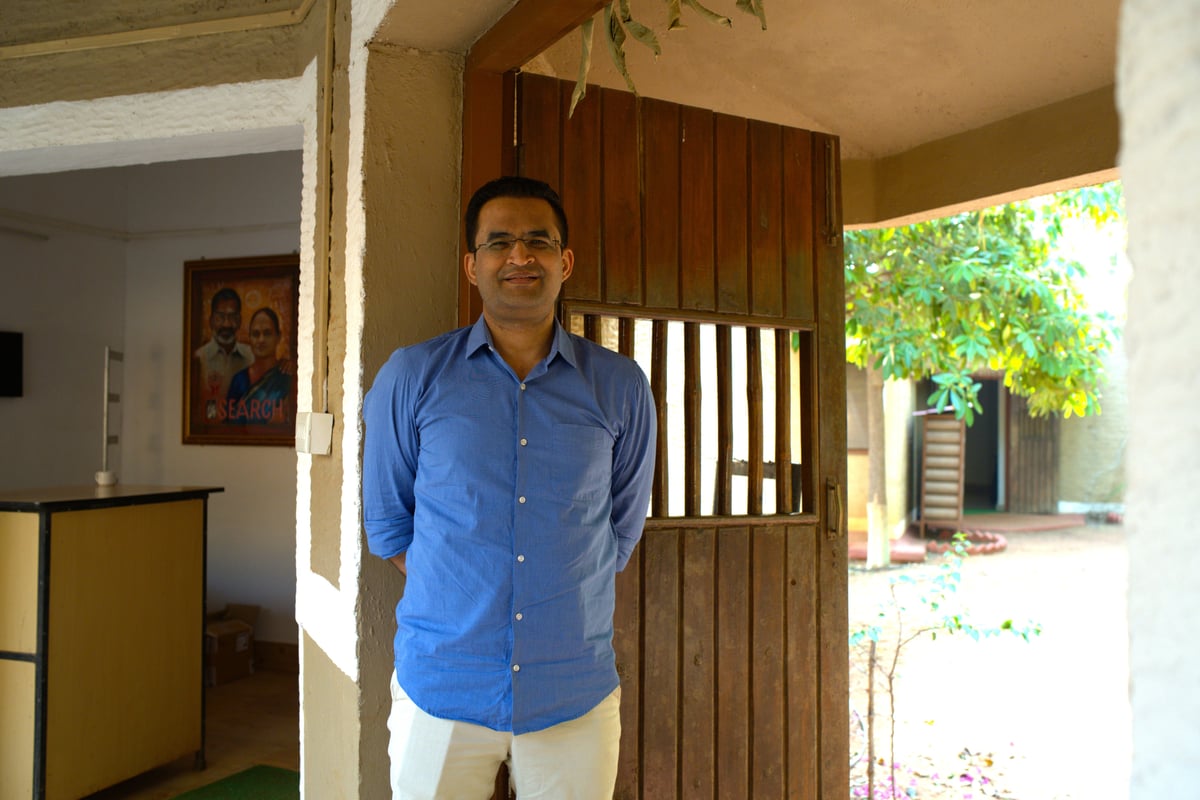When Dr Abhay and Dr Rani Bang founded SEARCH – the Society for Education, Action and Research in Community Health – in Maharashtra’s Gadchiroli district, their goal was to serve local tribal and rural populations by addressing their healthcare needs. For nearly 40 years, SEARCH has done just that: remaining rooted in the villages of Gadchiroli, conducting intensive research on the community’s most pressing health problems, innovating solutions and providing much-needed health services.
The impact of this work, however, has been far-reaching, particularly in the field of maternal and child health. The Bangs’ research has been published in international medical journals, and their innovation of Home-Based Newborn Care (HBNC) was adopted by 12 developing countries as a model to address high rates of infant mortality. In India, HBNC was officially adopted by the National Health Mission in 2011 as a primary national strategy to bring down rates of neonatal mortality.
As authorities on public health, Dr Abhay and Dr Rani Bang have been appointed to dozens of central government committees over the years, offering their expertise on issues of healthcare for children, women, and tribal communities. Their sons, Dr Anand and Amrut Bang – both joint directors of SEARCH – have also established themselves as experts in their own right. In the run up to SEARCH’s 40th anniversary, we visited Gadchiroli and had extended conversations with the Bang family.
In Part One of their interview, published here, they spoke about their work at SEARCH, the challenges they faced over the years and the legacy they hope to leave behind. This is the second part of the interview, in which they share their views on the state of public health in India, and the role that governments and civil society organisations can play to improve it.
The difference between healthcare and public health is not always well understood. How can we encourage a greater understanding of public health and allocate more resources towards it?
Dr Abhay: Public health is a science, and its main purpose is prevention, so that illnesses don’t occur. In general, when prevention is practiced on a very large scale by the government, it becomes public health. It also includes healthcare and rehabilitation, for when people do fall sick.
Resources for public health can come from three sources. The first is individual contribution, which is the major source of finance for healthcare in India – people privately pay for the care they receive. The second is medical insurance and the third is the government. Unfortunately in India, successive governments have made promises to allocate larger health budgets, equivalent to 2.5% of national GDP, but the allocation has hardly ever gone above 1.25%. Currently the government pays one-third of the total health costs in India, which is one of the lowest in the world as a percentage share. The total government spending on health right now is around $60 per capita per year. Comparatively, the US spends $10,000.
What can we do, in this case?
Dr Abhay: [laughing] Don’t fall sick! Take care of your own health as individuals – that is the greatest public health, the greatest contribution money-wise as well. But citizens should also put pressure on the government to allocate more resources, because health and healthcare is a very essential need, and each individual cannot make financial arrangements for it. So it is the government's constitutional responsibility to create a healthcare system that protects the entire population.

After all these years of leading the fight against infant mortality, how well do you think India has done? What has changed, and what can we do better?
Dr Abhay: Reducing child mortality is one of India’s great success stories. Thirty years ago, around 25 lakh Indian children used to die every year, with a national infant mortality rate of around 80 (deaths per 1,000 live births). Today, that rate has come down to less than 30. Professor Prabhat Jha, an epidemiologist, published a paper in The Lancet in 2017 pointing out that child mortality reduced faster in India between 2010 and 2015 compared to the 10-year period before that. There could be several reasons for this, but I think one of the reasons is that during this time, HBNC [the Home-Based Newborn Care model pioneered by SEARCH] was made available throughout the country through the ASHA workers programme.
Earlier, the major causes of child mortality were pneumonia, diarrhoea, neonatal deaths, immunisable diseases and malnutrition. Today, apart from malnutrition, there is a steep reduction in all of these causes. There are also regional differences. States like Rajasthan, Bihar, UP, Jharkhand and Odisha still have high rates of child mortality. And in tribal areas, child mortality rates are nearly 1.5 times higher than the rate in non-tribal areas. So these are the issues that we need to resolve. I think developing countries need to very aggressively find their own solutions to such problems.
In her book ‘Samaaj, Sarkaar, Bazaar: A Citizen-First Approach’, philanthropist Rohini Nilekani talks about the need to restore the balance between samaaj (civil society), sarkaar (government) and bazaar (markets or the private sector), with samaaj at the top holding the other two accountable. Your model of Home-Based Newborn Care is an excellent example of innovation in samaaj, scaled up by the government. Is this model still something that can be operated today? What would it take to have more partnerships between samaaj, sarkaar and bazaar?
Dr Abhay: Yes, more such collaborations should happen – there is a need, and there is scope. Because the social sector is closer to the community, it can be sensitive to communities’ emerging needs and develop models to address those needs. Usually, NGOs do this much. You hear stories of innovation everywhere. Where many usually lack – and where SEARCH worked differently – is creating research-backed solutions. We have conducted very rigorous, scientific field trials of whatever we have innovated. When there is a widespread need in the country, and a feasible, scientific solution, the probability of the government scaling it up increases.
Dr Anand: I would put it this way – it is not necessary that Rohini [Nilekani]’s framework of samaaj-sarkaar-bazaar should be applied to all. In some cases, the market may not have any role to play; in others, it could only be a collaboration between the market and the government, etc. There is no one-size-fits-all solution. Let a thousand flowers bloom – you never know which will work the best in different parts of the country.
Amrut: I think we need to understand the inherent strengths and imperatives of all three sectors. The inherent role of the government is to formulate laws and policies so that samaj can function without chaos. The role of the private player is to provide goods and services. So what is the role of the social sector? According to me, one of its main roles is to change human beings, which is not something the bazar does, and sarkar cannot do it as much. So our goal in the social sector is not to compete with the private sector in terms of scale or money power. I feel a bit scared these days when big social organisations have an unnecessary desire to become more like the private sector and the government. We need to be aware of what our DNA is, innovate based on that, and let the government and private sector take it up from there.

What role do you see for technology in rural healthcare?
Dr Anand: Technology is unquestionably empowering. It can play a role in carrying out tasks like diagnosis, histopathology, providing analytics or better treatment. But if a technological solution becomes an end in itself instead of the means to an end, I find it problematic. One of my parents' professors at John Hopkins used to tell them that public health students are like children with a key in their hands, trying to find a lock to fit it into. Many technocrats are like that. When you develop a solution in an ivory tower, it remains limited to that. Ideally, you should find the lock first and then design the key, through rigorous process, trials and reviews.
Amrut: Because my Bachelor’s degree is in engineering, I have always been fascinated by technology – but not in the way we conventionally define it. I believe that anything can become technology if it is based on some science or sound logic, and if it is able to consistently produce results within a particular error margin. The HBNC model is tech, because it is based on a very sound scientific principle, and it has shown consistent results in reducing newborn mortality. Therefore, anyone working in the social sector should be asking themselves, are we creating technology? Only then does it have the power to be used by somebody else. I want SEARCH to create more such technology in the future.
Today, we see that in a lot of Indian cities, prosperity is leading to adverse health outcomes. How should we think about this as a society?
Dr Abhay: There is a mega epidemic of non-communicable diseases – lifestyle diseases – across the world. For the first time in human history, there are more overweight than underweight people on the planet. Along with that come problems like hypertension, diabetes, heart disease, stroke, cancer, and mental health illnesses. Our data from 2006 shows a shift in the overall causes of death – increasingly, people are dying less of infections and more because of stroke and heart attacks. What we saw here in Gadchiroli is a reflection of what’s happening all over India. What we call the “demographic advantage” of India will be completely wiped out if that demography is sick. We need a healthy population to make use of the demographic dividend.
I don’t think there is a magic solution because there is no single cause. These are non-curable diseases that you have to live with. The major change required will be in people’s lifestyle and behaviour – 1.4 billion people will each have to ask themselves, what do I eat, how much do I exercise, is there pollution where I live? Some of these can be a part of government policies, like managing pollution, restricting availability of tobacco and alcohol, or creating spaces for exercise and sports. There are several ways by which you can restrict harmful behaviours and encourage healthy ones, but the government cannot order all of them.
